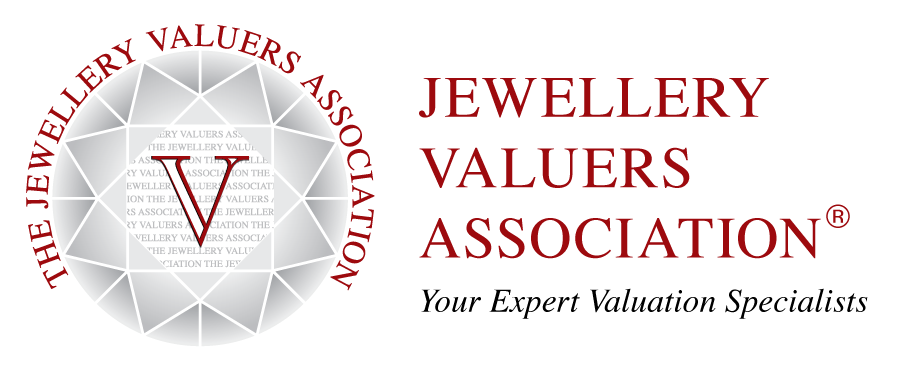Gareth Brown FGA DGA FJVA
Modern life is all about speed and convenience. It does not matter if we are buying something online, doing the housework or updating our home insurance. We all want to get things done quickly and with the least amount of disruption and inconvenience possible. And with more of us now working from home, companies are racing to find ways of being able to bring traditional products and services into our homes. Companies offering 'unsighted watch and jewellery valuations' are nothing new, they have been around since the dawn of the internet. But with an increase in home working, adverts for this type of valuation has become more prevalent. They claim to have done away with the hassle of you having to take your watch or jewellery to someone or for you to have to send your items away to be valued. Now you can get everything you need from the comfort of your sofa. Just take a photograph of your watch or jewellery, ping them off in an email, and hey presto, a completed valuation is with you in short order.
Sounds perfect doesn't it, but in reality, it is too good to be true.
Few people realise that in the event of an insurance claim, the onus of proof falls on them as the claimant to prove existence and value. Just because you have insured a one-carat diamond ring, doesn't mean the insurance company will just cut you a cheque and send you on your way. Oh no, they are going to want you to prove it. And wouldn't this be the worst time possible to discover that your unsighted valuation is not fit for purpose and that it likely won't be accepted by your insurance company?
But why wouldn't they accept it, after all a valuation is a valuation, right? No, an 'unsighted valuation', is not a valuation; it is an assessment, and the person compiling this assessment is working from a photograph and not the actual piece. so unable to ascertain or record the pertinent and critical information that is needed to determine and ultimately prove the replacement value. It is these reasons that an insurance company may choose to either settle at an amount lower than the correct market value for your item or worse still decline your claim entirely. Of course, if you are unhappy with your insurance companies decision, you can go to the Financial Services Ombudsman with a complaint, but as your unsighted valuation still cannot prove anything, you are unlikely to achieve a more favourable result.

Let us imagine that you have lost your one carat, round brilliant cut diamond single stone ring, set in 18ct yellow gold. You intend to claim your home insurance, and all you have in terms of proof is an unsighted 'valuation.' The critical aspects that this report cannot substantiate are, and not limited to the following:
Metal purity:
Just because your ring looks yellow in a picture, doesn't mean it is gold. It also does not indicate whether it's 9, 14, or 18ct gold. You are claiming for an 18ct gold ring, but your insurance company may only settle on a 9ct gold ring because that's the most prevalent gold purity used in the UK.
How much the ring weighs:
With gold prices being nearly at an all time high, its essential the weight of the ring is known. It might not sound a lot, but if your ring weighs 5 grams and the person making an assessment thinks it weights 3 grams, then that is two grams of costly gold you're missing out on.
How the ring was made:
Rings can be manufactured in several ways, ranging from a relatively inexpensive mass-produced cast piece, to a significantly more expensive hand made piece, and it is near impossible to determine the manufacturing process from a single home photograph. The difference in your settlement can be hundreds of pounds.
Is it a diamond?
How do you prove that the stone in your picture is a diamond and not a white sapphire, a colourless spinel, or even cubic zirconia? The simple fact is you can't.
What is your stone's carat weight?
For the sake of argument, let us say you can prove it's a diamond, but how do you prove its a one carat stone? You have guessed it; you can't! Carat weight is a unit of mass and not size. So to obtain an accurate carat weight, the stone either needs to be weighed on a set of special scales, or the length, width and depth measurements need to be run through a mathematical formula to obtain a calculated weight. There is no way you can achieve any of that from a picture. You can make an educated guess of the weight based on how wide the stone appears in the image, and a one carat round brilliant cut diamond should be around 6.50mm in diameter. But how can you tell that from a picture and what if your diamond looks smaller? The simple fact is a picture does not provide sufficient information of all the variables that influence the weight. So your settlement could be based on a stone that weighs less than what you had.
How do you prove colour and clarity?
Again you can't, can you detect the theme here? The variation of colour and clarity grades has an immense impact on a diamond's value, and your unsighted valuation cannot prove either the colour or clarity grade, because you can't grade a diamond from a picture. You think your diamond is a G, VS1. But your insurance company thinks its more likely to be an I, SI2. How do you prove otherwise?

These sorts of limitations are not just for single stone diamond rings; they cross over into every aspect of jewellery!
What if you have a diamond set bracelet? Let us say it's set with a total of 100 round brilliant cut diamonds and the person doing the assessment thinks they're around 2.00mm in diameter each. This would mean each stone is approximately 0.03 carat, so you have a total of 3.00 carats in your bracelet. But what if your diamonds were actually 2.20mm and weighed 0.04 carat each? Your bracelet would then contain 4.00 carats of diamonds. Do you think you can detect a 0.2mm difference from a picture? And that is 1.00 carat of diamonds you're losing out on.
What about your coloured stones? Can you tell the difference between a relatively inexpensive blue topaz and a more expensive aquamarine from a picture? No, you cannot. What about the difference in qualities for rubies, sapphires and emeralds? The difference in value for these stones can be hundreds to thousands, and the only way to determine the factors that affect the quality is to see the stone physically.
Watches
Despite the popular belief, that all you need is a reference number to value a watch. Watches are, in fact, not immune to the numerous limitations and problems that come with an unsighted valuation. A reference number does not prove the watch is genuine. Some of the new super fakes have all of the correct reference numbers. They are so convincing that it takes someone with specialist knowledge spending considerable time examining the watch physically to determine that it is fake.
A reference number neither indicates the quality or the originality of the watch. With some vintage and collectors watches, small aspects such as the dial finish, the type of font used and the spacing of the text have a significant impact on the value. Some watch references have been in production for a decade or more, and their values vary by thousands of pounds. How can you determine and ultimately prove where your watch falls in terms of value from just a picture? You cannot.
The simple fact is, an unsighted valuation is no substitute for a formal insurance valuation, It is not a physical inspection of the goods to be insured its an assessment on a photograph with an arbitrary figure attached and nothing more. But most importantly, when it comes to the crunch, nothing that has been documented in the report can be substantiated, which can leave you in a very precarious position when it comes to settlement.
The whole point of an insurance valuation; is it is there to protect you. It is there to provide your insurance company with provable facts, based on an expert physical inspection of the piece. So any settlement will be sufficient to replace what you have lost. And in the unlikely event that you have to go to the Financial Services Ombudsman with a complaint. Your valuation and more importantly, the working notes of the valuer who provided the valuation can be used in support of your claim.
An unsighted 'valuation' is tempting solely based on convenience. But convenience is all it has to offer. It is not fit for purpose, it cannot provide you with pertinent and provable facts, and it does not provide you with any form of security. The only way you can protect yourself and your most treasured items is to have them physically inspected and a formal valuation provided by a Member or Fellow of the Jewellery Valuers Association.
Do not let the idea of convenience nirvana leave you susceptible to financial loss and ensure your watches and jewellery are valued correctly.
